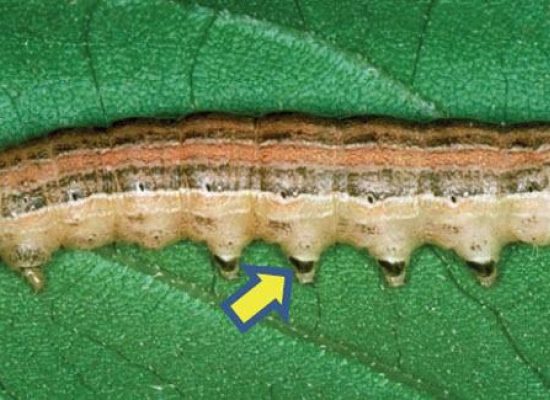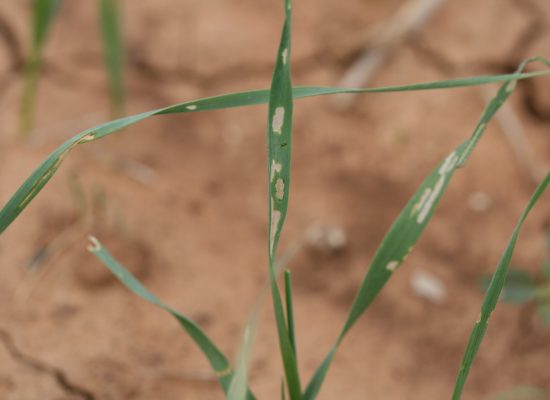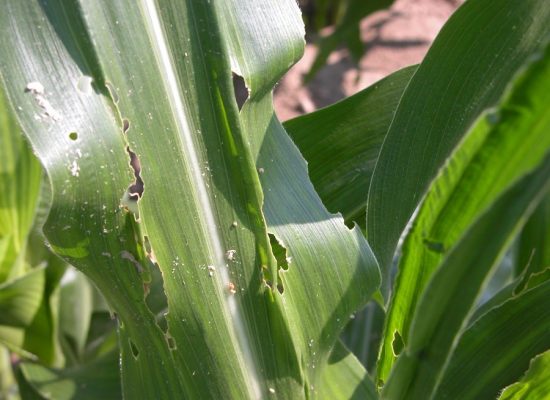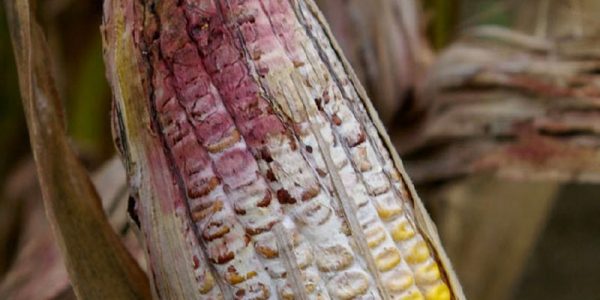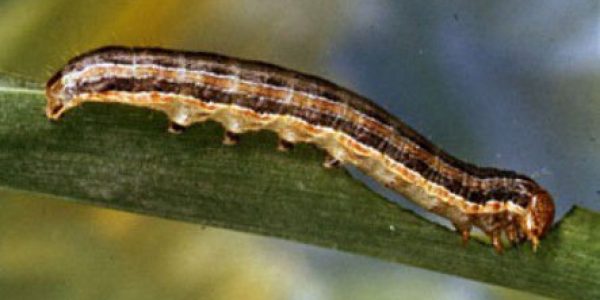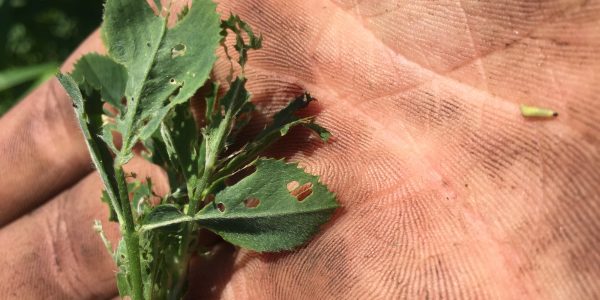Even just uttering the word ‘armyworm’ can strike fear into the hearts of farmers everywhere. People are still talking about the extent of the damage that armyworm created a few years ago.
Although armyworm is a problem we’d rather not discuss, it’s important to take steps to manage it so that the damage doesn’t get to the point that it did in previous years.
In this article, we will go-over identification of armyworm, favourable environments, and control methods.
True Armyworm ID:
True armyworm can easily be identified by the two white stripes lining the body and the dark, diagonal bands at the top of each proleg.
True Armyworm
Note the dark bands on the top of the abdominal prolegs. Photo by Marlin E. Rice. Retrieved from: https://www.pioneer.com/home/s...
Favourable Environment:
True armyworm like to lay eggs on grassy crops such as wheat, corn, and hay with Timothy or other grasses. The best time to scout for armyworm is just before dusk or just before dawn since armyworm tend to feed at night.
This year could be particularly threatening for armyworm as armyworm populations tend to be higher following a cool, wet spring. Cool, wet springs are not favourable to many predatory pests which control armyworm therefore allowing armyworm populations to thrive.
Armyworm Control
Control is warranted in corn if 2 or more larvae per seedling are found.
For wheat, if there are 4 to 5 un-parasitized larvae per 30 cm x 30 cm and the larvae are smaller than 2.5 cm, chemical control may be necessary. Be sure to check pre-harvest intervals on any insecticide you may use.
Armyworm can be very difficult to control once the caterpillars start to get larger and damage gets worse. Catching armyworm early by scouting at the proper times will ensure your problem doesn’t get worse so that you can time your insecticide applications accordingly.
Armyworm damage on winter wheat
Photo by: Tom Royer, OSU Extension Entomologist. Retrieved from: https://osuwheat.com/2014/10/0...
Armyworm damage on wheat can be characterized by 'windowpane' feeding.
Corn damage looks like the leaves have been chewed-on by a person. Armyworm tend to target the softer leaf tissue and will leave behind the tougher midrib on corn.
True Armyworm damage on corn
Photo by: Ontario Ministry of Agriculture, Food and Rural Affairs. Retrieved from: http://www.omafra.gov.on.ca/IP...
As always, if you think you have a problem, Twenty View Farms is here to help. We can help you determine if you have a problem and determine whether an insecticide is warranted.
Contact Daryl Haanstra (905-973-0036), Jordan Eyamie (905-966-9608), or the Twenty View office (905-957-4979). We can help evaluate your fields and help you decide what products you can use to control true armyworm.
Author: Jordan Eyamie
June 14th, 2018
*thumbnail image by University of Missouri Extension
Related Articles
Armyworm
Are you checking your fields for armyworm?
Here's the information you need on identification, favourable environments, and control methods.

